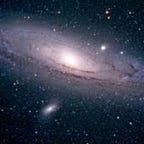What Are Star Clusters And What Different Kinds Are There?
A deeper look into these stunning objects, what are they? How many are there? What are the different types? How are they formed and how big are they?
What are they? A star cluster is a group of stars that share a common origin and are gravitationally bound for some length of time. This means that they are together because of gravity for some length of time. Star clusters are mainly utilized by astronomers to provide a way to study stellar evolution and ages. Astronomers can track how fast the stars In the star clusters move and predict how long they have been there.
How many are there? There is less than you may think, about 150 the biggest of which being Omega Centauri. But don’t think that because of this decently small number that there is not a lot of stars inside these clusters. Omega Centauri has about 10 million stars!
What are the different types? There are two main types. The first and probably most well know is a globular cluster. A globular cluster is a spherical collection of stars. Globular clusters are very tightly bound by gravity giving them their spherical shape and higher density in the middle. These clusters are truly beautiful with millions of bright and colorful stars. Globular clusters are located in a halo of a galaxy. The brightest stars are usually red giants. The closest globular cluster is messier 4 or more commonly known as Omega Centauri (distance 7,000 lightyears).
The second type is open clusters. An open star cluster is a group of young irregularly shaped stars found in the galactic plane. They contain hundreds of stars unstably bound together. The stars in these clusters were born together. They’re still sometimes moving within the nebula or cosmic cloud of their creation. They are sometimes called “galactic clusters”.
How are they formed? We are not sure of this yet but the simplest idea is that a giant cloud of gas and dust condenses. The center of the cloud pulls in material from its surroundings until it becomes dense enough to trigger star formation.
how big are they? Size varies, as everything in space. Different star clusters are of different sizes. A globular star cluster ranges from 10–30 lightyears with 10 thousand to several million stars. Open clusters however are smaller. If we consider only the core of the open clusters it could measure 6 light-years approximately. But if we take into account the whole cluster diameter it will range from less than 10 to more than 100 light-years.
